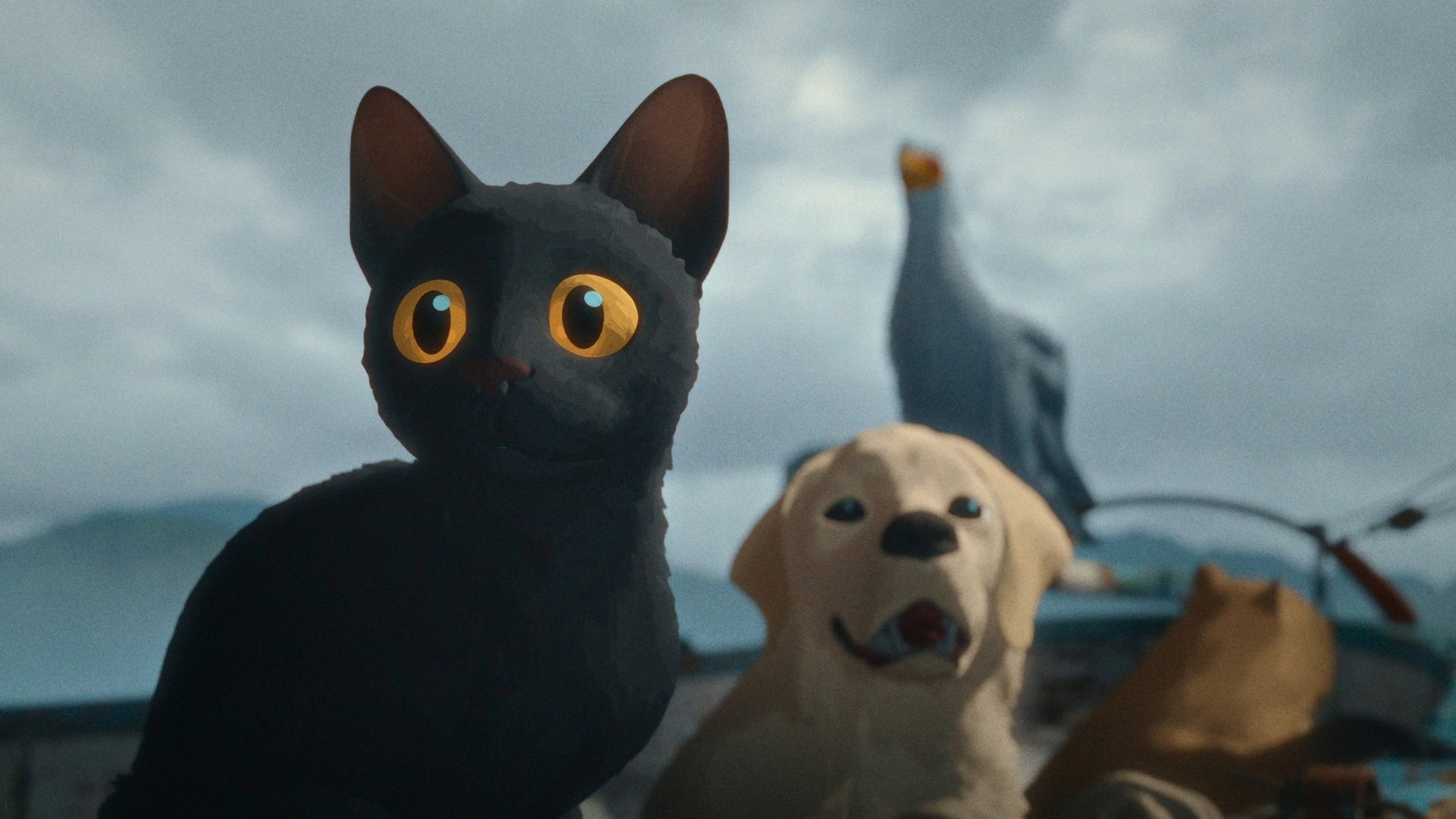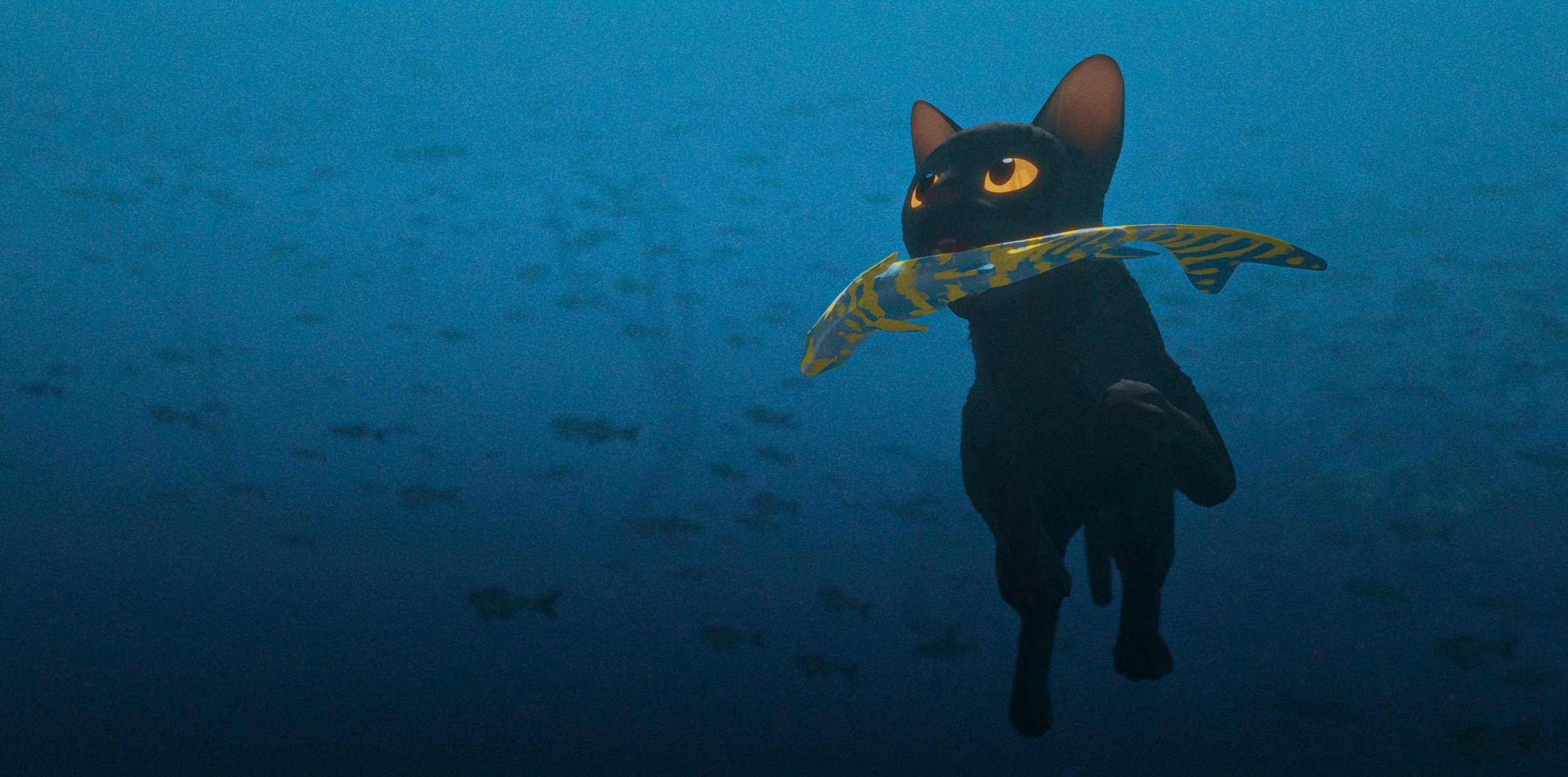'Flow Review: Gints Zilbalodis’ Animated Animal Adventure Flick is a Refreshing, Near-Meow-ster Piece
Latvian Animation film director Gints Zilbalodis asks what would happen if a biblical flood occurred in a world without humans. There's no Noah with an ark, and the animals struggle to survive. How would these animals fare with a Darwinist test on a planetary scale, backed by some Al Gore-coded Inconvenient Truth noise? With Flow, Zilbalodis delves into this subject matter through a captivating, dialogue-free, and distinct tale of perseverance and teamwork, rendering it one of the most memorable animated features of the year. It’s so good that Latvian submitted it to represent their country at this upcoming Oscars race. And I hope it makes the final cut.
Image copyright (©) Courtesy of Janus Films
PG: Peril and thematic elements
Runtime: 1 Hr and 25 Minutes
Production Companies: Dream Well Studio, Sacrebleu Productions, Take Five, Charades, Baltic Content Media
Distributors: Janus Films and Sideshow
Director: Gints Zilbalodis
Writers: Gints Zilbalodis, Matīss Kaža
Release Date: November 22, 2024
In a world with no humans, an independent cat witnesses a great flood that wrecks his home. He sees a wooden boat propelled by a capybara and finds refuge there. Soon after, more animals, including a lemur, a dog, and a bird, all find themselves in the boat. Since there’s no end in sight for the flood, the cat must contend with its nature and learn how to rely on its critter comrades to survive.

Flow’s imperfect cel-shaded animation style is unique
I haven’t seen Gints Zilbalodis' prior work, but I was completely enamored with the unique visual style that Flow bears. Within the current landscape of stylized animated features with a comic book or picture book ambiance, Flow arrives with a retro sixth-generation console-era aesthetic. I'm talking about the GameCube, Xbox, and PS2 timeframe when developers experimented with innovative and unique art styles for their games, including cel-shaded animation. It's specifically reminiscent of The Legend of Zelda: The Wind Waker in terms of its CG look and gorgeous water textures, and Shadow of the Colossus in terms of fantasy-based art direction and attention to scale that puts you in the shoes of these tiny creatures and their larger than life adventure.
Besides intentionally looking like an early CG toon, Zilbalodis’ animation team strives for realistic architecture, meaning all the animals are designed to reflect their real-world counterparts in proportions, character design, expression, and movement along with detailed environmental effects like lighting, elevating the nature of the animated quest. Imagine the hyper-realistic CG-animated remakes of The Jungle Book and the lesser Lion King (2019), but if they embraced a stylish approach and weren’t too cowardly to classify themselves as animated features.
A heartwarming tale, or tail, without dialogue
With its visual-driven storytelling, Zilbalodis and his team craft a heartwarming story about the bonds struck through unlikely circumstances. The adorable, nameless black cat at the center starts as a typical feline: sassy, to itself, and often hungry. Though you don't see his owner, it’s telling that the cat had a pampered upbringing as if he were treated like a God, given the cat shrines surrounding its abandoned residence and his attitude. Yet, it takes an act of God to challenge the nature of its character.
In the course of the adventure and the interactions among its companion animals, including a chilling capybara, a kleptomaniacic self-obsessed lemur, an excitable golden retriever, and a white-feathered crane, the cat nicely grows into a caring being. They don't need to anthropomorphize these animals with voices or designs to provide a triumphant and well-rounded arc rooted in humanity. It’s so entertaining for audiences of all ages to witness these critters going against their natural habitat to find each other, with the opening and final images rooting in a sweet parallel that wraps itself up in a nice bow. The fact that no words are spoken, channeling the energy of the heyday of silent storytelling mostly seen in animated shorts today, shows that animators are some of the most creative storytellers working in film.
Flow’s meticulous sound mixing elevates the adventure’s epicness
Flow’s noise is composed of diegetic sounds between the creatures – meowing, chirping, barking – and environmental noises of waves crashing, boats creaking, etc. Sound designer Gurwal Coïc-Gallas and the rest of the sound department’s work weaving together the naturalistic noise of this climate disaster adds to the persuasiveness of the life-threatening perils these critters face. It’s worth mentioning that all of the animal noises were pre-existing, so it’s crazy how they were able to get the expressive sounds of a crane and a friggin’ lemur that evoke frightened emotions, matching their lifelike expressions. It’s also worth mentioning that the most fantastical aspect of the animal element was how they used other animal noises for the capybara because the natural screech noise they made didn’t match the laid-back nature of the character. It could’ve fooled me.
The mystical, moving score provided by Zilbalodis (talk about containing multitudes) and Rihards Zalupe enriches the serenity of the visuals at its quietest moments. Sometimes the music and the imagery would be so soothing, that I zonked out at my first viewing during TIFF. Please rest assured that I rewatched the film without any signs of exhaustion. Either way, Flow is one of those indie pictures I wish I’d get to see in a Dolby theater due to the meticulousness of the sound poured into production, making the film feel so complete as a cinematic experience beyond its stunning animation quality.
Flow knows exactly what it is: a cute little picture operating on its own system and style, making it hard to say anything outright negative. It’s short, sweet, gets to the point, and adds food for thought regarding how we as people depend on ourselves until uncontrollable natural events force us to better ourselves, told from an all-animal ensemble.

Like Homeward Bound in a biblical sense, but with no dialogue and GameCube-era cel-shaded textures, Gints Zilbalodis' Flow is a visually stunning and bold animated fable that adds more food for thought than most animated features this year.
Rating: 4/5

For full access to all articles on the website and member-only content, such as the complete archive and the Award Artisan Interview Series, sign up for a Rendy Reviews membership.



